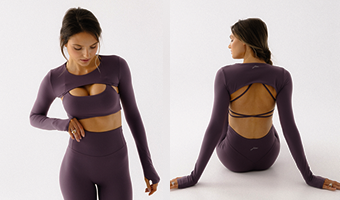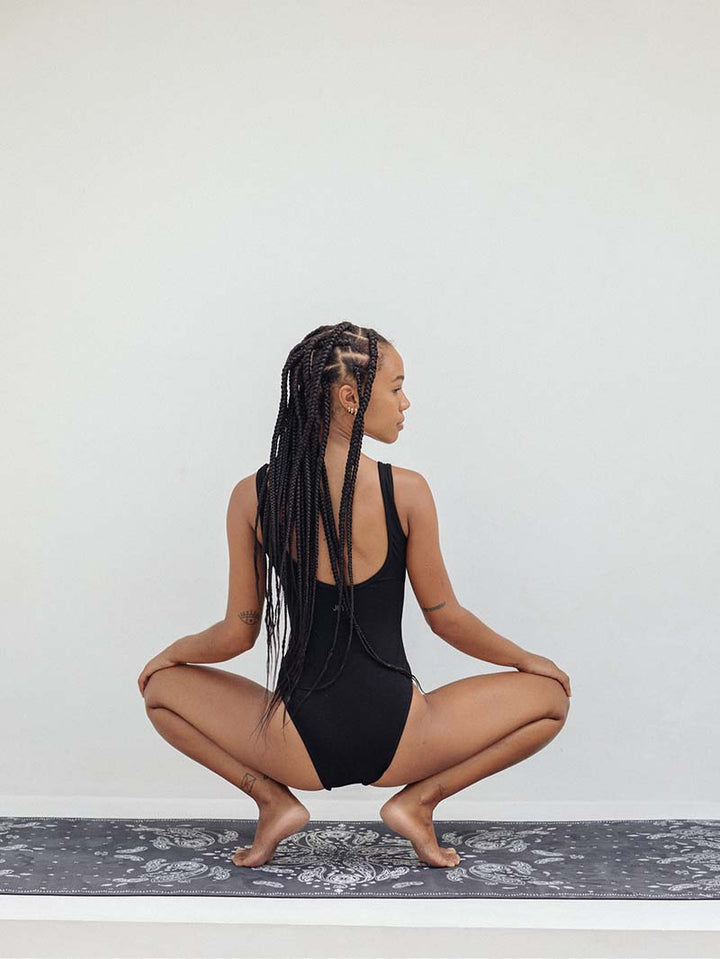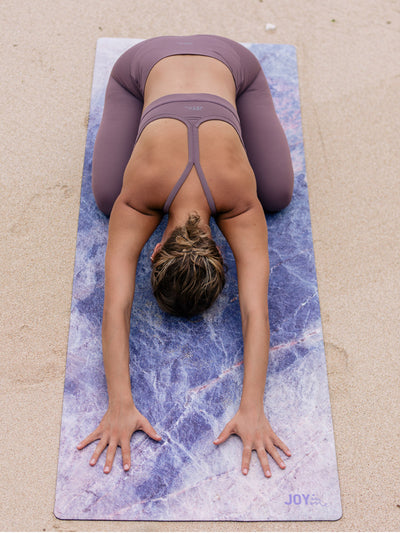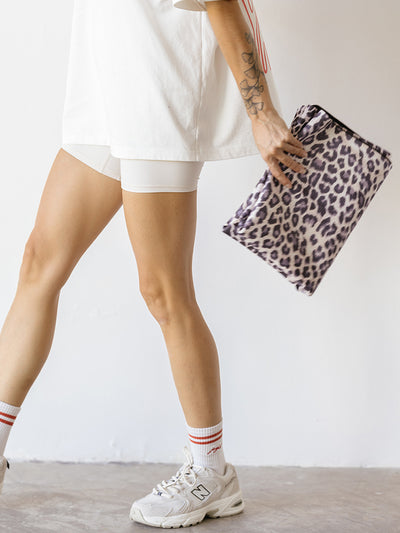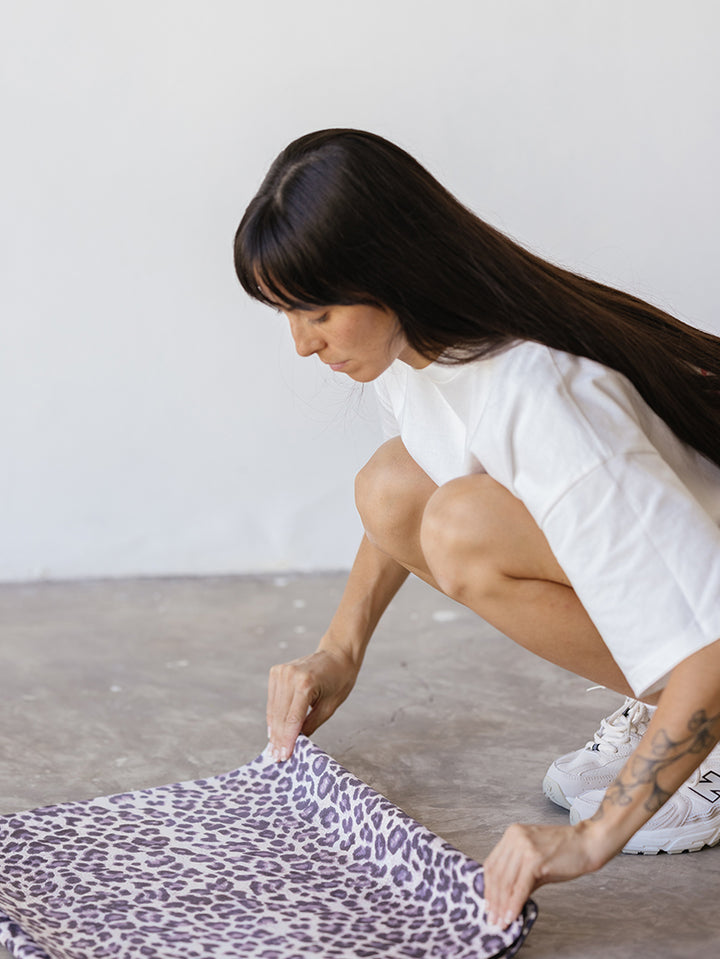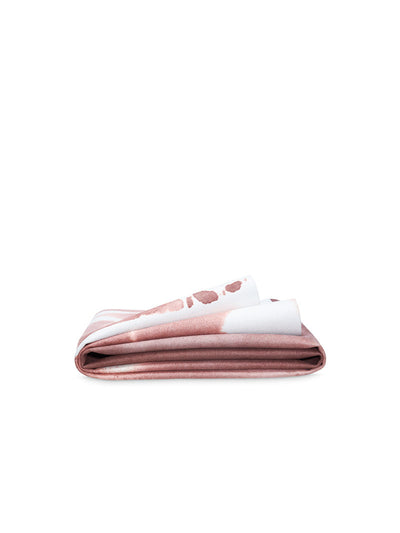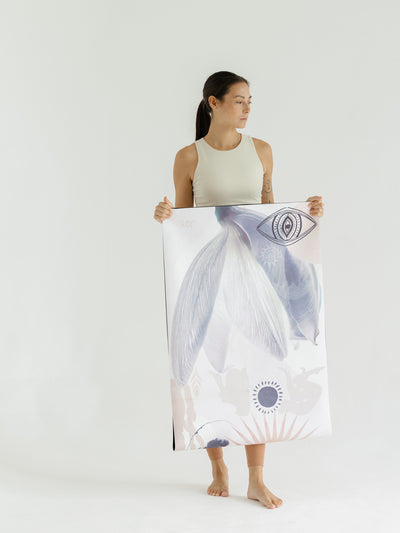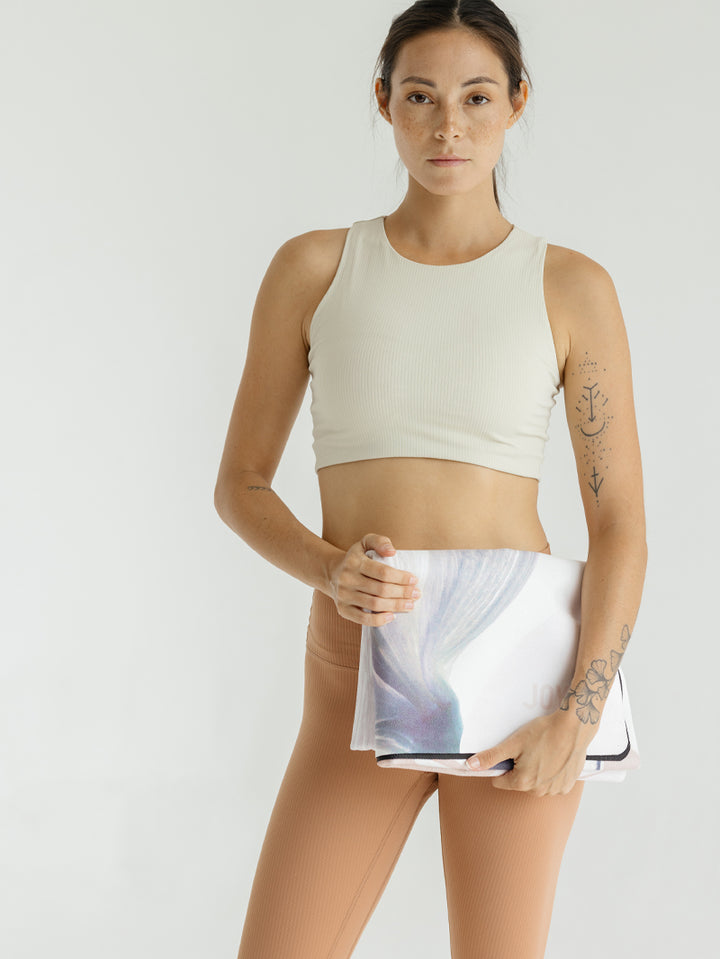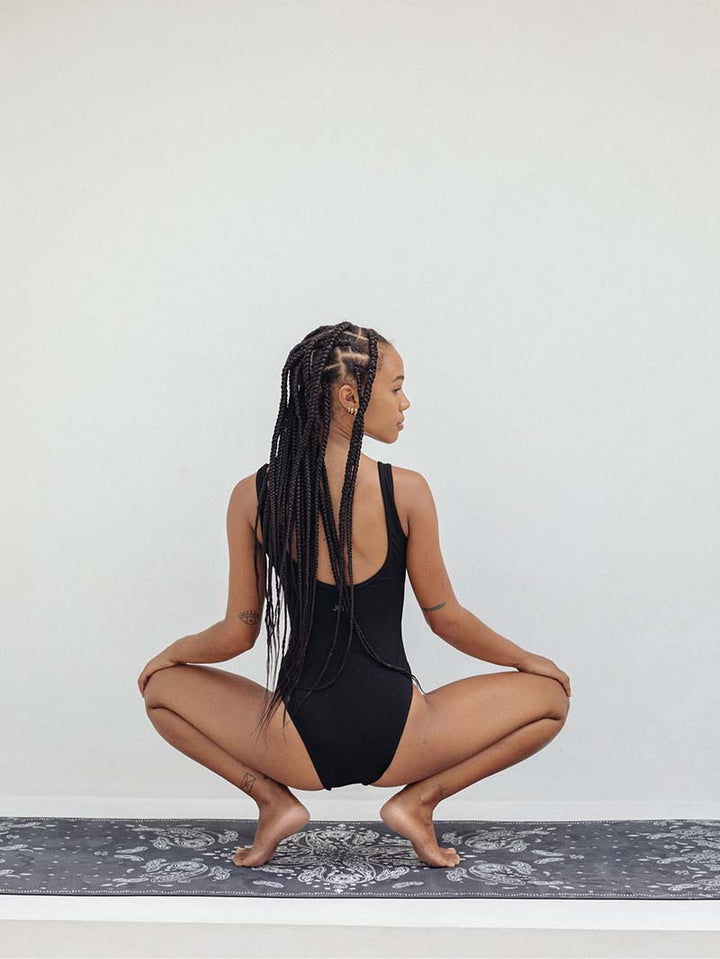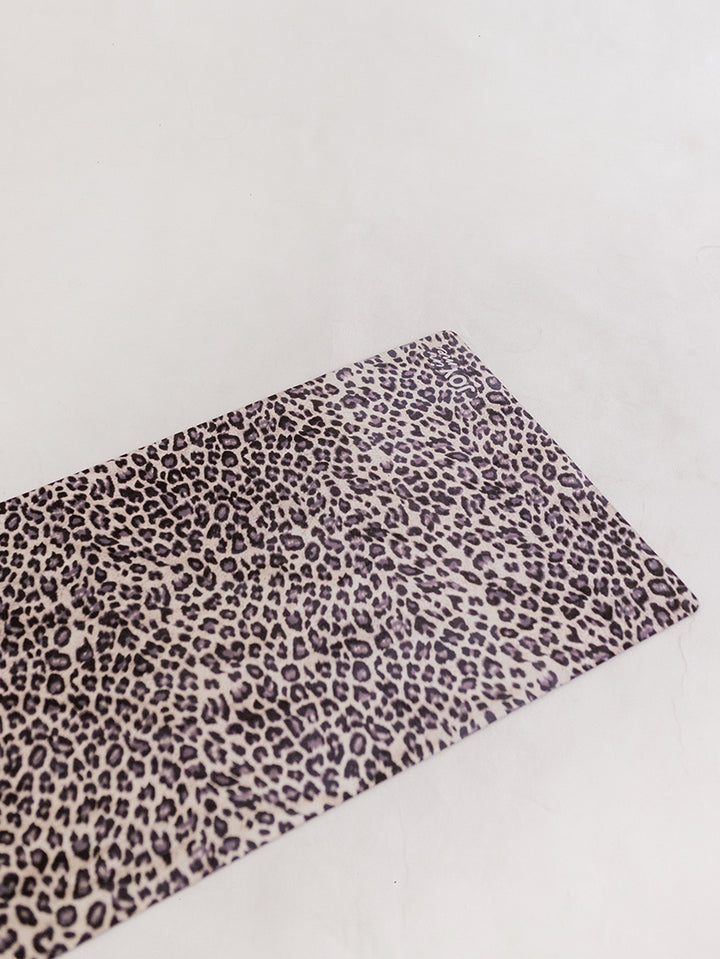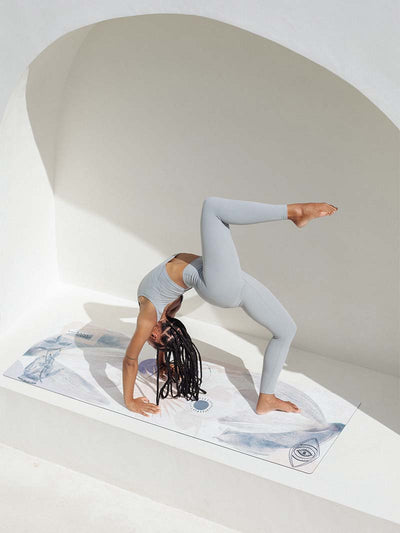How to care for yoga mats?
Regularly cleaning exercise mats not only improves overall hygiene but also the condition of the material from which they're made. Each material requires a unique approach. Have you found your dream yoga mat and are wondering whether a specific model is machine washable ?
Learn how to properly clean it to enjoy it for as long as possible and maintain its grip even during intense practice. What should proper yoga mat care look like? Check out our guide!

How often should you clean your yoga mat?
It's difficult to answer the question of how often to wash your mat. Intensive practice, bacteria, and the cosmetics we use can all impact the condition of your yoga mat. Considering the many variables involved, try to develop a regime tailored to both the material and your specific practice.
It's worth checking the mat's surface after each workout to ensure it's free of dirt . Basic care and hygiene, along with efficient dirt removal, will minimize the risk of future bacterial growth and the development of stubborn, more difficult-to-remove stains. Sometimes, simply wiping the mat down is enough to refresh it effectively .
Mat cleaning methods – choose the best one for you!
Due to its specific characteristics and the degree of use, each mat requires individualized care. Regular cleaning of the surface from everyday wear and tear is essential, while more invasive procedures, such as washing, are also crucial.
Which products should be hand washed and which should be machine washed? Find out what to look for when choosing a cleaning method that's right for your mat's material!
Quick refresh after each use
It's worth developing the habit of lightly refreshing your mat every time you use it. It's best to do this right after a session, especially an intense one. Simply use a soft cloth and water. Try to gently wipe your mat after each practice and then leave it unfolded to dry .

Thorough cleaning – how to do it step by step?
Sometimes, water alone isn't enough to properly clean an exercise mat. However, using inappropriate products and methods can damage the material. If you're wondering whether your mat is machine washable, check the material it's made of.
For PRO mats made of natural rubber and coated with polyurethane, this solution is not recommended, so limit yourself to wiping them with a damp cloth . For stubborn stains, add a drop of dishwashing liquid, lemon juice, or white vinegar.
Due to their microfiber finish, mats from the FLOW collection and FLOW TRAVEL exercise mats are best cleaned regularly with a damp cloth or sprayed with water. However, for more stubborn stains, you can machine wash them at 30 degrees Celsius, but avoid using harsh detergents.
It's safer for your mat to use soap nuts or a few drops of lemon , which is a natural refresher. Keep in mind that the mats won't react well with fabric softener.
After washing the mat, lay it flat to dry completely. To speed up the drying process, wrap it in a towel . However, avoid exposing the mat to strong sunlight, which can accelerate its biodegradation.
How to Clean Your Yoga Mat? A Review of Effective Remedies and Tips
Several useful products have already been mentioned in the text. However, these are not all possible products and liquids for cleaning mats. Learn about home and more specialized methods for removing dirt!
Home remedies for washing the mat
You don't have to look far for effective ways to keep your mat clean. Many homes have a few readily available products, such as a microfiber cloth, vinegar, or lemon , that can be used to create friendly, natural stain removal mixtures.
PVC mats can be cleaned with soap and water, while natural rubber models—as mentioned earlier—require a more gentle approach, such as water and vinegar. However, if you want a pleasant scent, you can also add a few drops of your favorite essential oil to the solution .
Professional cleaners, oils and sprays
Do you prefer ready-made solutions? Opt for a professional cleaning product. Mat cleaning and maintenance sprays, which often contain oils, are very popular.
These types of products are typically designed for PVC mats and are not recommended for use with rubber models . Organic and universal products also exist, but it's worth carefully reading their instructions before purchasing.
Type of material and how to care for the mat – what to remember?
Removing dirt is one thing, but the wrong method can contribute to the loss of the material's properties. A material that's clean and yet depleted of its value is definitely not desirable. Learn how to care for your mat's structure.
How to clean a non-slip mat?
To ensure your yoga mat maintains its grip and ensures safety and stability during exercise, avoid strong detergents. Instead, opt for hand cleaning and a 50:50 vinegar/water mixture (white or apple cider vinegar). This is a good solution because it doesn't dry out the mat's surface.
It's best to boil the water first and then let it cool . Remember not to soak the mat – otherwise, it will become slippery and its grip will be weakened.
How to clean a rubber mat?
Vinegar is also great for cleaning rubber mats. However, it's not recommended to soak them in water or wash them for long periods of time – this can weaken the material's structure and cause them to wear out faster.
Vinegar, unlike soap, will help maintain the proper properties of rubber , including its adhesion, by adding the necessary amount of moisture to the mat.

Can you wash a yoga mat in the washing machine?
Washing mats in a washing machine is a controversial topic, and questions about it come up frequently. It's worth reiterating that not all models can be cleaned this way. The model most often cleaned mechanically is made of PVC, but even then, it's worth paying attention to the manufacturer's recommendations.
The type of mat surface plays a significant role . An open-cell structure allows the mat to be machine washed at low temperatures, while a closed-cell structure makes it more susceptible to damage.
Drying and storing – the final step in caring for your mat
To properly dry your yoga mat, lay it flat in a well-ventilated area, away from direct sunlight , which can damage the material. Once dry, roll the mat loosely to avoid permanent creases and store it in a dry place away from extreme temperatures.
Regular cleaning and proper drying will ensure the durability of your mat and comfort during your yoga practice, while extending the life and usability of the material.
